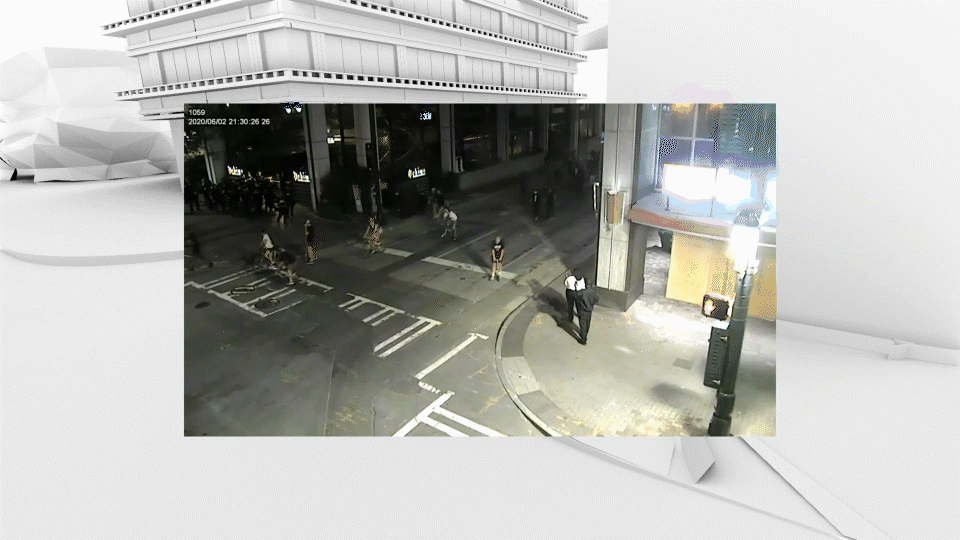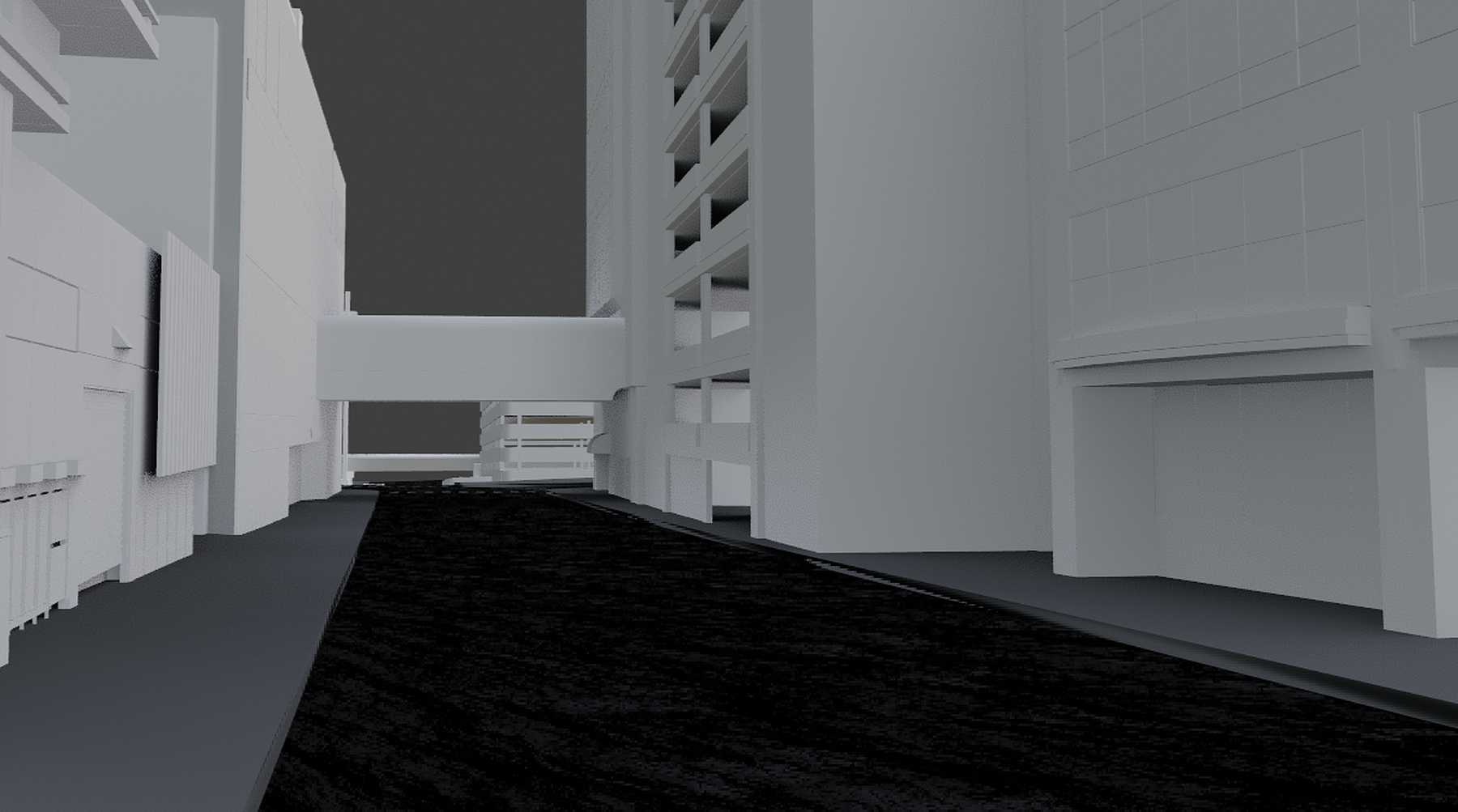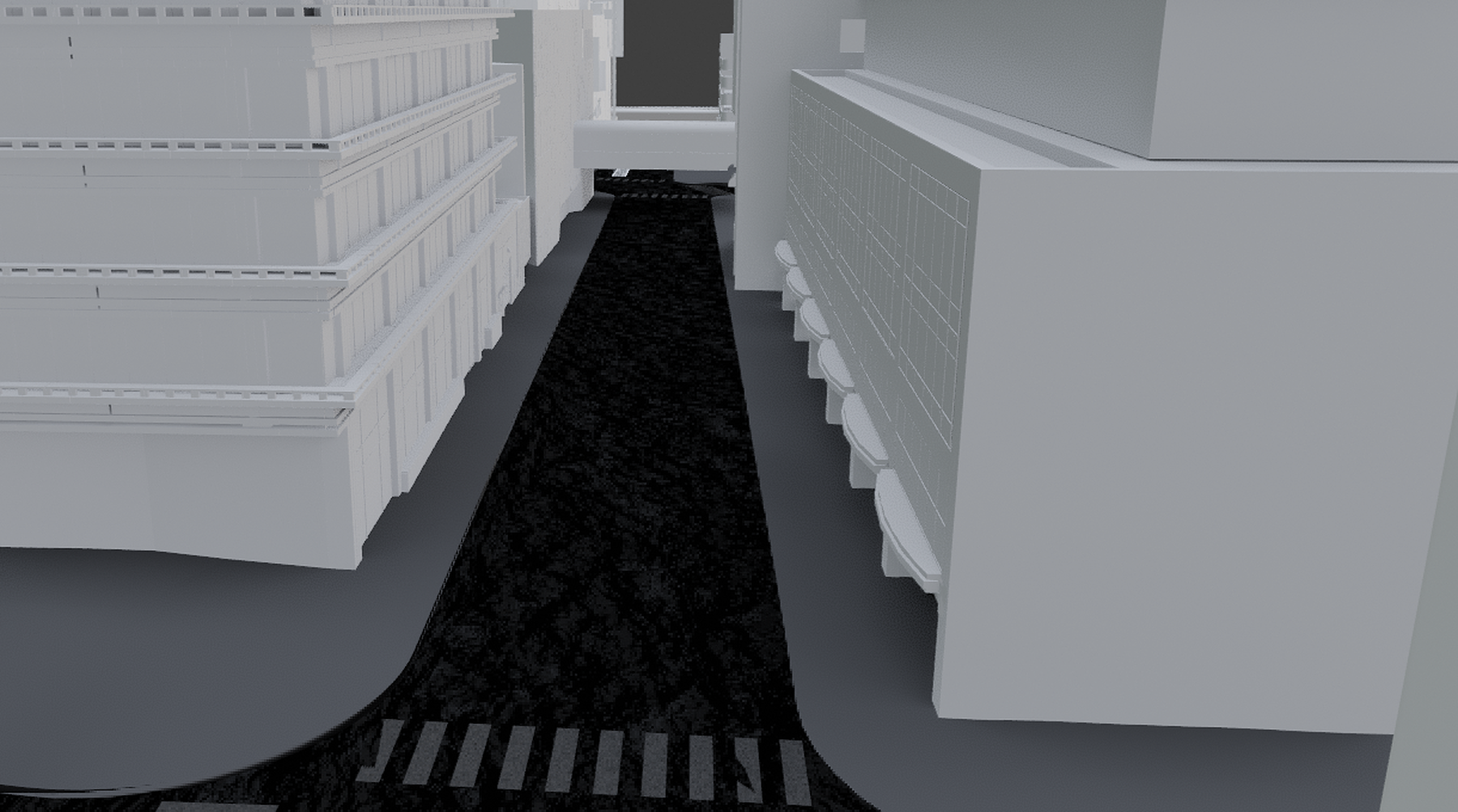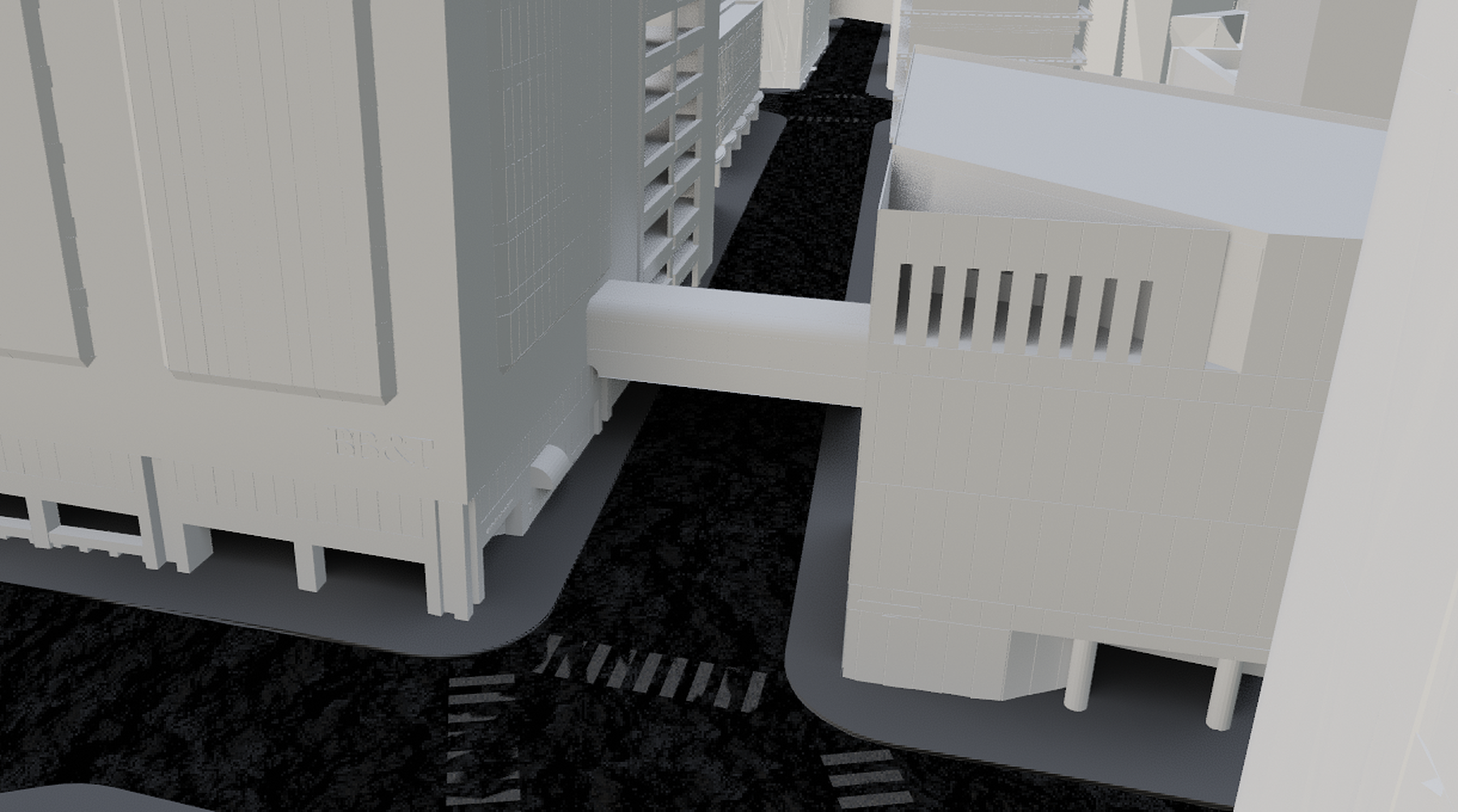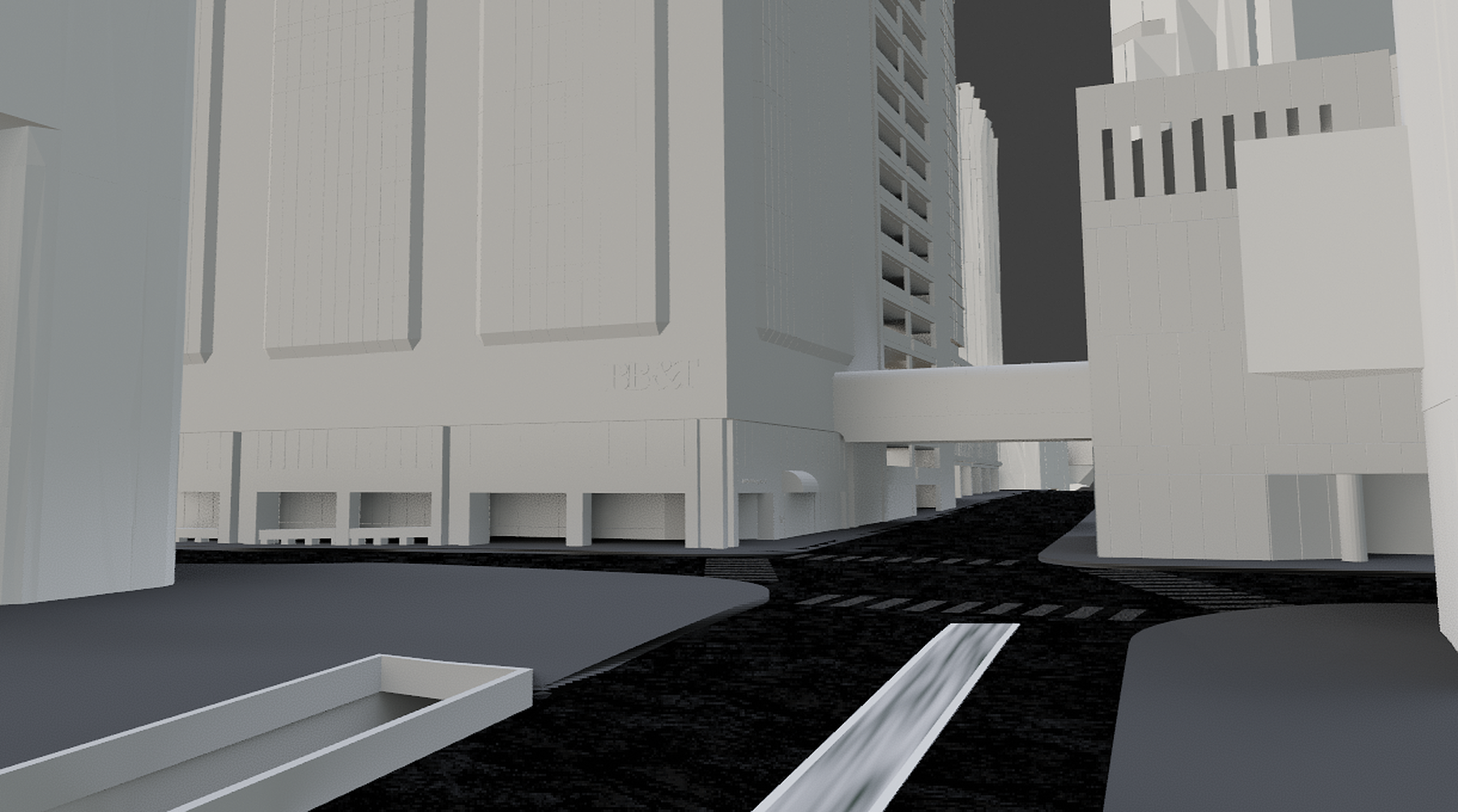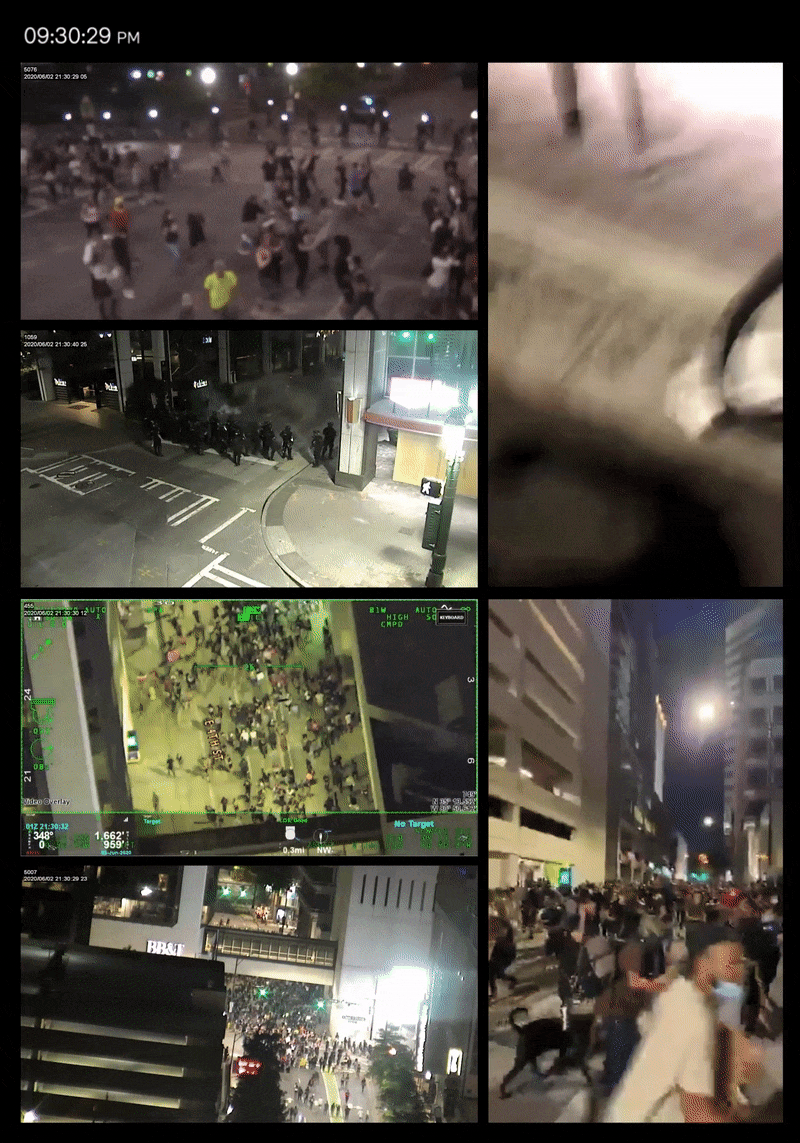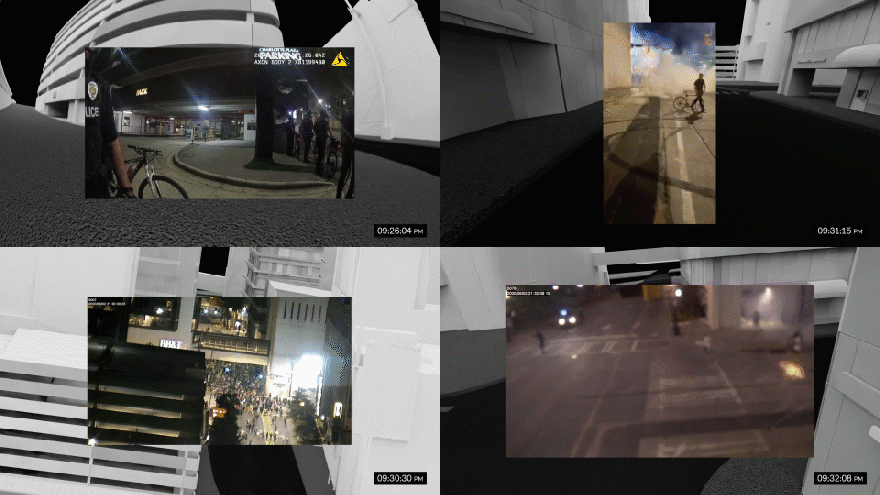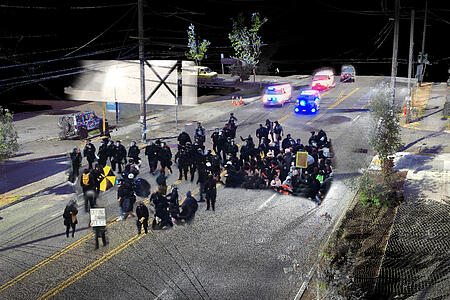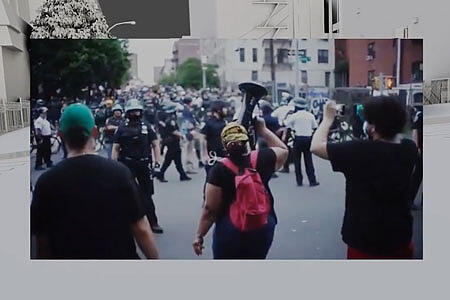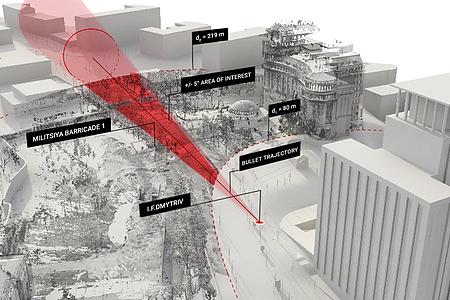Charlotte Kettling Analysis
An in-depth analysis of police tactics used against BLM protesters in Charlotte, NC on June 2, 2020
Article
"Ambushed by the Cops: When Police Deliberately Trap Peaceful Protesters"
Collaborators
Location
Charlotte, NC
Completion
2021
On June 2, 2020, in the first days of the nationwide upheaval following the murder of George Floyd at the hands of Minneapolis Police, hundreds of Black Lives Matter protesters marched through the streets of Charlotte, North Carolina. While the march proceeded largely without incident for most of the evening, at 9:30 PM the main body of protesters — still several hundred strong — were suddenly kettled by a large and coordinated force of Charlotte-Mecklenburg Police (CMPD), who deployed an arsenal of ‘less lethal’ weapons on the peaceful crowd in a carefully-planned tactic on a single block of downtown Charlotte’s Fourth Street.
Working in collaboration with The Intercept, SITU Research mobilized an extensive archive of user-generated video to create a detailed, immersive reconstruction of the events as they unfolded. This analysis shows the extent to which the kettling tactic was planned and directed by CMPD officers on the ground, as well as how the police deliberately weaponized features of downtown Charlotte’s built environment to prevent escape once the kettling had been initiated. The careful positioning of CMPD forces at all points of egress created the kettle and restricted the protesters’ movement, ultimately spreading panic and preventing them from dispersing.
As has been observed in other instances of kettling by police forces around the country — including in SITU’s own analysis of a brutal crackdown by the NYPD in the Bronx neighborhood of Mott Haven — the kettle quickly became a scene of chaos and violence, with CMPD firing tear gas, flashbang grenades, and pepper balls into the trapped crowd.
The scene of the kettle and the ensuing chaos was downtown Charlotte’s East Fourth Street, between the intersections of South College and South Tryon streets. The few exits at street level lead into commercial parking structures — evidence shows that at the time of the kettle, these were all blocked either by closed rollgates or lines of riot police in body armor. The open upper level of one such parking structure was used by police as a raised position from which to fire on the crowd once they were trapped. Our team combined multiple available sources of reference imagery, evidentiary video, and 3D data to create an environment model that accurately reproduces the sequence of events and tactical positioning of police units mobilized during this event.
Essential to our analysis was the careful synchronization of documentary video evidence from multiple perspectives. Our team analyzed a large body of user-generated and publicly available video to identify unique audiovisual signatures in the video content that established a precise chrono-synchronization of the video evidence to create a comprehensive timeline. In particular, the arsenal of flashbang grenades deployed by CMPD have a clear visual and auditory signature as captured both by protesters at street level and by police helicopter and CCTV cameras hundreds of feet from the site of detonation. The team used these signatures that appear across the collection of footage to register all video into a single, cohesive timeline of the event.
Combined with a detailed 3D model of the kettle location on Fourth Street, this allows the reconstruction to show the essential moments of the chaotic, rapidly evolving situation from multiple angles interrelated in 3D space, creating continuity beyond the frame and clarifying the critical movements of the police operation and the immediate reactions of the panicked crowd.
The clearly observable actions of CMPD units, moving to surround the protesters in quick succession and without visible provocation of any kind, follow exactly the description of the tactical plan given by CMPD Sergeant Scott Sherwood in a conversation with one of his fellow officers just before the kettle, which was captured on his body camera. When the footage was made public, Sergeant Sherwood was suspended for two weeks for his comments, which the police department deemed “unprofessional, insensitive, and unacceptable”. However, the more senior officers he names in his description, including the officer in charge of the incident, Major Rob Dance, have faced no public discipline of any kind.
Between the Sergeant’s statements caught on body camera and the tactical disposition of the CMPD forces established from the larger body of analysis, it is clear that the intention of the CMPD commanders on the scene was to subject the entire crowd — or at least as many as could be easily trapped — to a barrage of ‘less-lethal’ weaponry.
The implementation of this clearly pre-meditated tactic is part of a disturbing nationwide pattern of police engaging in especially aggressive enforcement behavior against those engaged in public protest and assembly. Such abuses result in few if any consequences for the units and officers involved. As a companion piece to the video, Staff Writer at The Intercept Alice Speri has published this article examining the practice of kettling, its history, contemporary case studies and lack of regulation.


